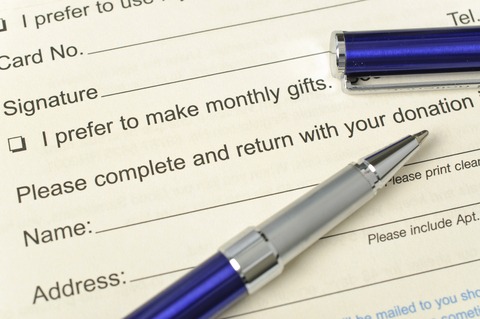“I think most clients don’t really think to coordinate with the charity as to how they should be gifting. Most clients will just write a check or drop $50 in the collection jar.”
—Rick Brooks, June 17 interview with Investment News.
Read the full article here: Giving gains traction – and closes in on 2007 record.
 According to a report by Giving USA, gifts to charity totaled $335.2 billion last year, up 4.4% from 2012 and almost back to the peak levels reached in 2007. I’ve also had the pleasure of being able to assist some very generous clients with their personal gifts recently, so I thought I would devote this column to the most efficient ways to make your own personal impact on the community by creating a charitable giving plan.
According to a report by Giving USA, gifts to charity totaled $335.2 billion last year, up 4.4% from 2012 and almost back to the peak levels reached in 2007. I’ve also had the pleasure of being able to assist some very generous clients with their personal gifts recently, so I thought I would devote this column to the most efficient ways to make your own personal impact on the community by creating a charitable giving plan.
Americans are incredibly generous, with the average household contributing almost $3,000 to charity in 2013. In my experience, much of this is accomplished through trips to Goodwill, weekly contributions in church, or through small donations given piecemeal throughout the year. Few people have a family plan for the charitable gifts they’ll make during the year. Having a charitable giving plan allows you to tell solicitors that you’ve already allocated your donations for the year and it helps the charities you support to better plan their own finances. Finally, it also helps you to stay organized so that, for example, during a busy week or month you don’t accidentally double up on an unplanned donation.
The first step to creating a charitable giving plan is to decide how much you want to donate to charity over a given period. This allows you to work your donations into your monthly cash flow planning or to time larger gifts in between other larger expenses to help smooth your own spending plan. You may also want to set aside a portion for off-the-cuff donations or for situations that arise during the year like disaster relief.
The second step is to figure out how and when you will make your donations. Many charities appreciate periodic monthly contributions, allowing them to better plan their own spending. This can be accomplished by setting up regular transfers from your bank or credit card, and most larger organizations have developed the infrastructure to support these kinds of gifts.
Larger donations can be arranged separately, allowing for you to work with your financial advisor or broker and the charity to ensure that your gift is made in the most efficient manner possible. For example, most financial advisors will recommend gifting highly appreciated assets rather than cash. Transferring an investment with a low cost basis allows you to book the full value of the gift while avoiding paying the tax on the capital gain. Most charities are able to accept marketable securities, but other assets like real estate or partnership interests can be complex transactions that will require additional effort.
Another method for making large gifts is to open an account with a Donor Advised Fund (DAF). A DAF is a charity that acts a bit like your own personal foundation, allowing you to make larger lump sum donations to the DAF and then dole those gifts out to your preferred charities over time. Using a DAF allows you to time your gifts, for example during a high income year when a large deduction gives you a larger tax benefit. Most funds will also assist you in researching the charities that you are interested in, so that you can be more confident that your donations are being used effectively.
Community foundations like The San Diego Foundation are local organizations that help people set up and manage donor advised funds. Community foundations will generally have better insight into local needs, provide more personal assistance, and often provide opportunities to connect with other local donors. Many mutual fund companies and brokerage firms like Vanguard Charitable and (Charles) Schwab Charitable also have charitable gift funds, often with lower administrative costs but also with less support.
Finally, you can also make large planned gifts from your estate. Many of the larger charities are able to help you coordinate these gifts with your existing estate plan. Still, you should be careful that these gifts don’t conflict with other goals like taking care of your heirs.
The final step in any charitable giving plan is to review the results and make any necessary changes. Does your planned philanthropy fit within your budget? Will your gifts provide the tax deductions you are expecting? Also, can the charities that you support show you what they did with your donations, and did your gifts have the impact you expected?
As with all financial planning matters, a Certified Financial Planner™ professional at Blankinship & Foster can help you create a charitable gift plan personalized to meet your own unique situation and gift-giving desires. Contact us today!

